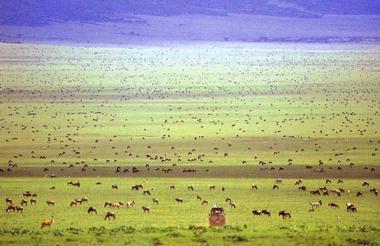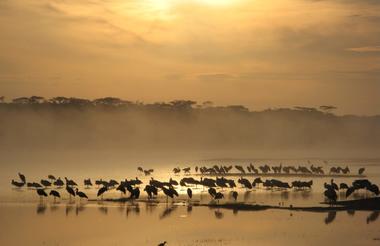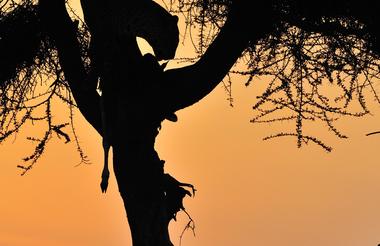On arrival at Kilimanjaro International Airport (by your own arrangements) you can collect your luggage and make your way to the Coastal Airlines waiting area of your scheduled light aircraft flight to Ndutu Airstrip in Serengeti National Park.
On arrival at the airstrip, you will be met by your guide from Lemala Ndutu Mobile Tented Camp and transferred to the camp. The airstrip is a short distance from camp, however, there will be some game viewing along the way.
After enjoying a welcome drink, a short debrief on the do's and dont's at the lodge and settle into your room, you are welcome to enjoy a refreshing lunch at the lodge's restaurant, al the while enjoying sweeping views of the acacia clad Ndutu woodlands and the flurry of birds and game that frequent the lawns of this lovely lodge.
All en-suite cottages are built from local materials, namely stone and thatch, which makes them naturally cool due to the thick walls and provide simple but most comfortable accommodation. Each room has a bathroom with hot showers, sink and flushing toilet. All of the cottages have a private veranda overlooking the natural unfenced landscape of indigenous trees and shrubs outside your cottage door ensuring you are never far from the host of birds and mammals who call Ndutu their home. The cottages extend from a warm and welcoming central dining, seating and bar or ‘mess’ area which has long been a gathering place for friends old and new.
As the heat dies down, you will gather in the mess area for a quick cup of coffee or tea, a biscuit or two before setting out on your PM game drive. From December to May, depending on the rains, the plains of Ndutu are populated by huge herds of wildebeest, zebra and antelope as they settle on the fertile grasslands to calve. As is to be expected of nature, the predators come in droves too, feasting on the vulnerable young. It's a smorgasbord of wildlife and the natural circle of life. During the dry season, the plains empty out as the herds move off in search of better water and grazing. There is plenty of resident game though that don't follow the migration, including giraffe, elephant, hyena and antelope which tend to concentrate around the waterholes. All six cat species can be found in the area throughout the year; lion, leopard, cheetah, caracal, serval and African wildcat.
There is no doubt that being in the Ndutu during the calving season is possibly one of the most special places, and magical time in the planet to be. However, having said that, given the abundance of resident game that follows the Wildebeest and Zebra migration route, there is really no 'bad' time to visit the Ndutu area. A more than healthy population of resident cats, wild dogs and hyenas are a true testimony to this. So no matter what seasons it is, expect to see LOTS.
A stop along the way to enjoy a sundowner drink will allow you to alight from the vehicle and enjoy the end of the day, with your feet on the ground, feeling the breeze, warmth and scents of the grasslands.
On your return to the lodge, you will have ample time to shower and change into fresh clothes before supper. All dining at the Lodge is in the central seating, dining and bar area which is the heart of the lodge. Dinner is served at your table with a hearty four -course dinner served each evening. The central bar serves mean cocktails which is a great way to start off your evening.
The evening campfire is a legendary part of life at Ndutu. For decades, this has been the time and place where after a day’s adventures wildlife photographers, trackers, safari guides, filmmakers and natural history experts have gathered in the evening calm after day’s exploration. Sit and enjoy the mesmerizing ambers and crackling sounds of this fire, whilst enjoy a night cap and the soothing silence descending around you as night falls on the Serengeti plains.
An askari will accompany you to your room, for a well deserved nights' sleep.
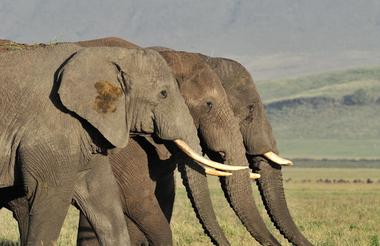
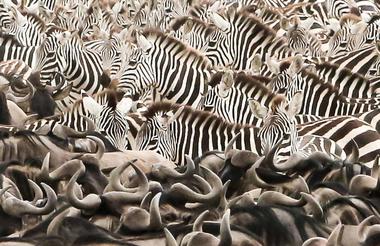
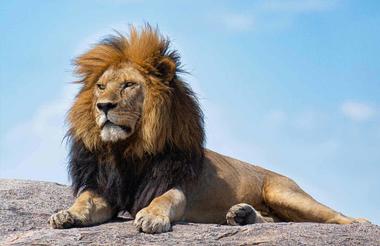
Given the abundance of resident game that follows the Wildebeest and Zebra migration route, there is really no 'bad' time to visit the Ndutu area. BUT, if seeing the Great Migration is top of your bucket list ( and so it SHOULD BE!!) please remember that the herd's movements are highly dependent on the rains. There is indeed a pattern and logic as to where they come and might move to, and it is based on previous years, an rough estimates of where they can be and how long it may take them to get somewhere...but it is not a perfect science at all. One this is certain, the big herds usually arrive on the plains of Ndutu around November and December and move off around April and May. So speak to us about the best time to visit Ndutu in order to increase your chances of catching it, and do remember that there is always plenty to see, even if the elements are not quite with us and the migration misses you.
Please note the flights depart at 10:45 or 15:45 - wherever possible we would recommend the earlier departure.
Please note that your luggage allowance is strictly 15 kg's per person in soft bags, this includes hand luggage.
A more energetic day might begin with an early morning bush breakfast during a game drive in one of many distinct landscape areas within the Ndutu Conservation Area: marshlands, acacia woodlands, soda lakes of Ndutu and Masek or the vast expanse of the Serengeti plains are all within easy reach – each with its own distinct wildlife populations and seasonal visitors. The marsh areas for example are favoured by big cats to bring up their young, whereas the short grass plains are where Wildebeest babies are born during the Great Migration.
Without a doubt, the Serengeti National Park – with its endless plains, rolling into the distance as far as the eye can see is one of Africa's wilderness neuralgic spots, and it will soon be apparent that you are entering one of the richest wildlife habitats in the world, crisscrossed by rivers and lakes that provide a valuable water source to the area and attracts wildlife in its thousands.
Lunch and dinner will be enjoyed back at the lodge, where if you look carefully you will notice a long standing population of sleek and graceful genets – patterned to camouflage into the shadows, these elegant nocturnal creatures can be glimpsed perching on the rafters of the mess area. The genets have come to enjoy the relaxed atmosphere as much as Ndutu’s visitors.
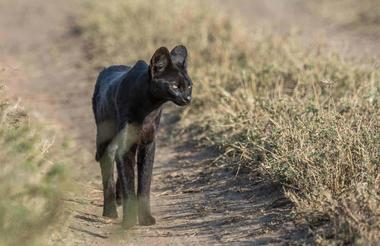
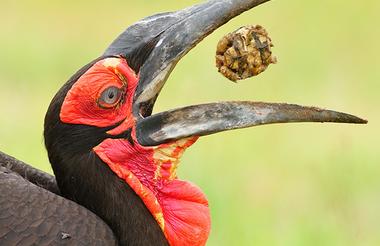
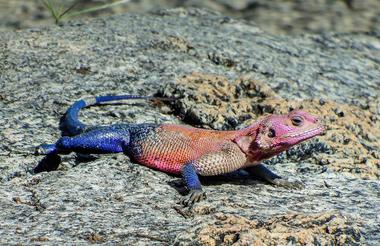
During your stay at Ndutu, it will become second nature to immerse yourself in the search and full-scale enjoyment of the herd. After breakfast, you may opt to head out for the whole day or to go out and come back for lunch and then go out again. There is no telling where exactly the herd will be, but the majority of the wildebeest migration normally passes through the Ndutu between February and March when they are heading for the Western Corridor of the Serengeti National Park. Cats and good numbers of plains games abound.
A visit to the nearby Olduvai Archaeological Site, or a birds-eye view of the herd from a Hot Ait Baloon are well worth alternatives if you fancy spicing up your stay.
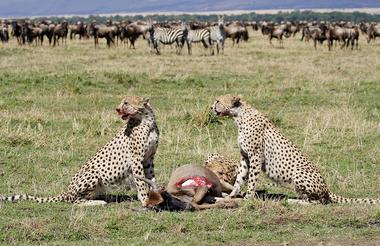
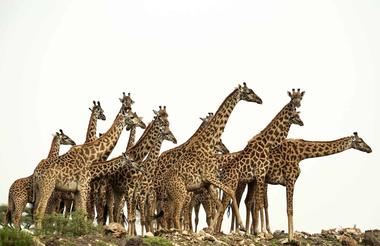
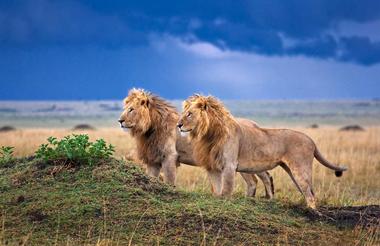
Your plan for the day will be discussed with your driver-guide constantly whilst on drives and back at the lodge. Feel free to discuss with him what species, vistas or experiences you would like to target or see again, photograph, or spend more time with.
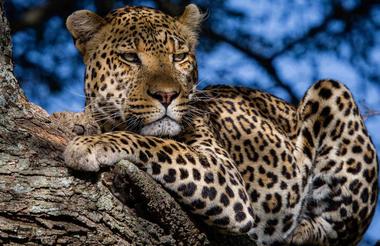
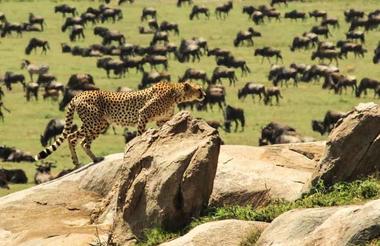
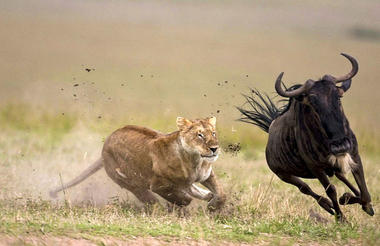
Today your journey home begins.
Enjoy your last breakfast and morning game drive at Ndutu before meeting your flight back to Arusha. The exact landing time will be shared with lodge managements 24 hours prior. On arrival in Arusha 's JRO airport you will be able to connect with your homebound flight.
The Africa Geographic Team trusts that you have enjoyed every minute of your travel adventure and hope you return to make more African Inspired memories with us !
End of Services
